Creamy Sun-Dried Tomato Salmon features a delicious sun-dried tomato basil sauce with plenty of garlic notes for an impressive main dish. This recipe includes a dairy-free option as well as an option for classic cream sauce.
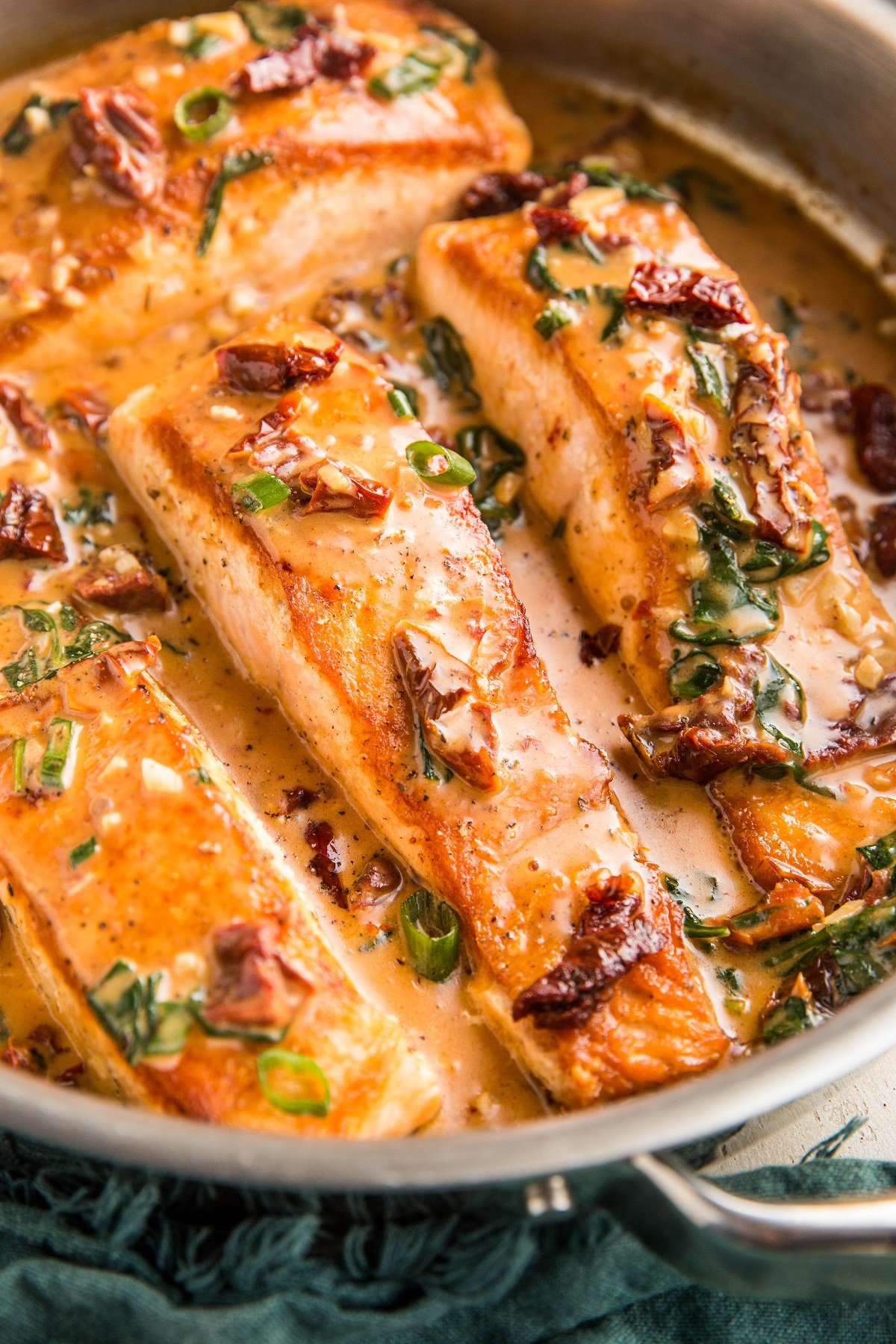
For me, this luscious, creamy sun-dried tomato salmon recipe is magic for a number of reasons.
First and foremost, we pan-sear salmon to crispy perfection prior to adding the sauce, which results in the most amazing crispy salmon skin with a perfectly tender inside.
Of course, once the sauce is added, we’re gifted with a luxurious, rich combination of flavors that makes you feel like your taste buds are launched into a glorious vacation.
Pair it with Lemon Garlic Rosemary Rice, Garlic Herb Roasted Vegetables, or Caramelized Onion and Roasted Garlic Buttermilk Mashed Potatoes with Parmesan for a complete meal.
I make this recipe dairy-free using full-fat canned coconut milk, but I have also included an option that uses regular cream.
The next time you’re craving a delicious salmon recipe or you’re having company over for dinner, whip up this show stopper!
I love that this delicious main course is easy enough to make for a weeknight dinner any time the desire for something luscious hits, but is also fancy enough to serve to guests for a holiday dinner or special event.
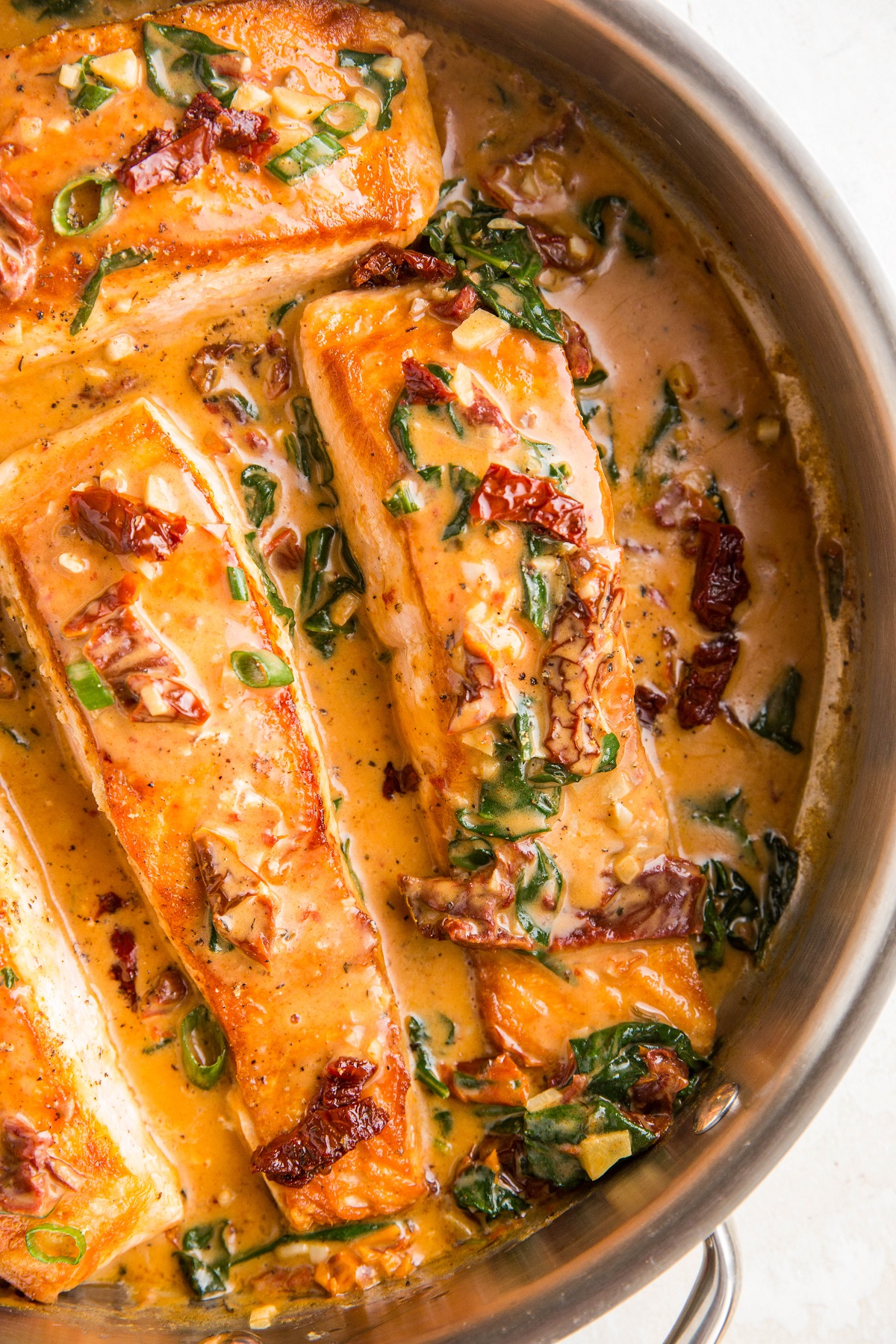
Let’s discuss the wholesome ingredients for this amazing salmon recipe.
Ingredients for Sun-Dried Tomato Salmon:
Salmon: Pick up 1.5 to 2 lbs of fresh salmon filets for this easy sun-dried tomato salmon recipe. My favorite is wild-caught salmon such as King salmon or coho salmon.
Atlantic salmon works great for this recipe too due to its high fat content.
Fatty cuts of salmon like Atlantic salmon and King salmon result in a great deal of flavor and result in amazing texture as the fish becomes crispy on the outside and tender on the inside.
Sockeye salmon will also work but do note that because of how lean sockeye salmon is, the recipe won’t turn out quite as rich or flavorful.
If you don’t have access to fresh salmon, you can use frozen salmon but be sure to thaw it completely before making this recipe.
Avocado Oil: Used to sear the salmon, we use avocado oil for its high smoke point and its neutral flavor. I don’t recommend using olive oil as it will burn and smoke long before the salmon has finished cooking.
Sea Salt and Pepper: Used to season the salmon and to bring out the flavors in the sauce, use salt and pepper to your personal taste. If you taste the sauce and feel it tastes bland, continue adding little sprinkles of salt until you start to detect the big bold flavors.
Fresh Garlic: Fresh cloves of garlic really brighten up this dish and give it depth of flavor.
Full-Fat Coconut Milk or Heavy Cream: Used for the creamy sun-dried tomato sauce, you can use canned coconut milk for a dairy-free option or heavy cream if you do dairy.
Because I eat dairy-free the majority of the time, I use full-fat canned coconut milk for the majority of my creamy sauces. While there is the faintest touch of natural sweetness to coconut milk, it doesn’t taste overly coconutty to me when paired with other flavorful ingredients like sun-dried tomatoes and garlic.
That said, if you have a sensitive palate and you don’t enjoy coconut milk, I’d recommend using heavy cream.
If you use heavy cream, use 1 ⅔ cups.
I don’t recommend using anything other than full-fat canned coconut milk or heavy cream.
Other non-dairy milks won’t result in the same flavor or texture and lower fat milks won’t thicken to the right consistency without making other changes to the recipe like making a roux to prevent the milk from separating or curdling.
Onion Powder & Paprika: Both onion powder and paprika provide some supportive flavor to round out the flavor profile here.
Rice Vinegar or Apple Cider Vinegar: For a little pop of flavor, I like adding rice vinegar to bring tangy flavor to offset some of the richness of the cream sauce.
Sun-Dried Tomatoes: The star of the show here! Buy an 8-ounce jar of sundried tomatoes that are packed in oil for the best result. I like buying sun-dried tomatoes that are packed in olive oil instead of canola oil.
While you can use sun-dried tomatoes that don’t come in oil, they won’t result in quite the same rich flavor.
Fresh Basil (Optional): If you enjoy the flavor of fresh basil, chop up some leaves and sprinkle them on top of the salmon just before serving.
There are many different ways you can change up this recipe to customize it for the whole family. Here are some ideas.
Optional Additions:
- If you love pesto sauce, feel free to either add pesto sauce to the creamy sun-dried tomato sauce, or serve the salmon with some pesto drizzled on top.
- Looking to add some extra Vitamins to the meal? You can stir 2 to 4 cups of baby spinach in with the sauce for some added nutrients.
- If you do cheese, grate some freshly-grated parmesan cheese over the salmon just before serving.
- Wine lovers, feel free to add in ⅓ cup of dry white wine such as sauvignon blanc.
- To make the sauce lower in fat, you can use 1 cup of coconut milk or cream and 2/3 cup of vegetable broth or chicken broth mixed with 2 to 3 teaspoons of cornstarch.
- If you have fresh herbs on hand like fresh parsley or oregano, feel free to add them in.
- For a little spice kick, add 1/4 to 1/2 teaspoon of red pepper flakes.
- Add fresh tomatoes or use fresh tomatoes in lieu of sun-dried tomatoes if you prefer the flavor of fresh tomatoes.
- Sauté 1/2 cup of finely chopped red onion or yellow onion with the garlic for added onion flavor.
- To make the sauce ultra creamy, you can blend the sun-dried tomatoes and garlic with the coconut milk in a blender or food processor until it is creamy before adding it to the large skillet.
Now that we’re familiar with the basic ingredients, let’s make this delicious skillet sun-dried tomato salmon recipe!
How to Make Sun-Dried Tomato Salmon:
Remove the salmon from its packaging and pat off any excess moisture using paper towels.
Sprinkle all of the salmon filets with sea salt and black pepper.
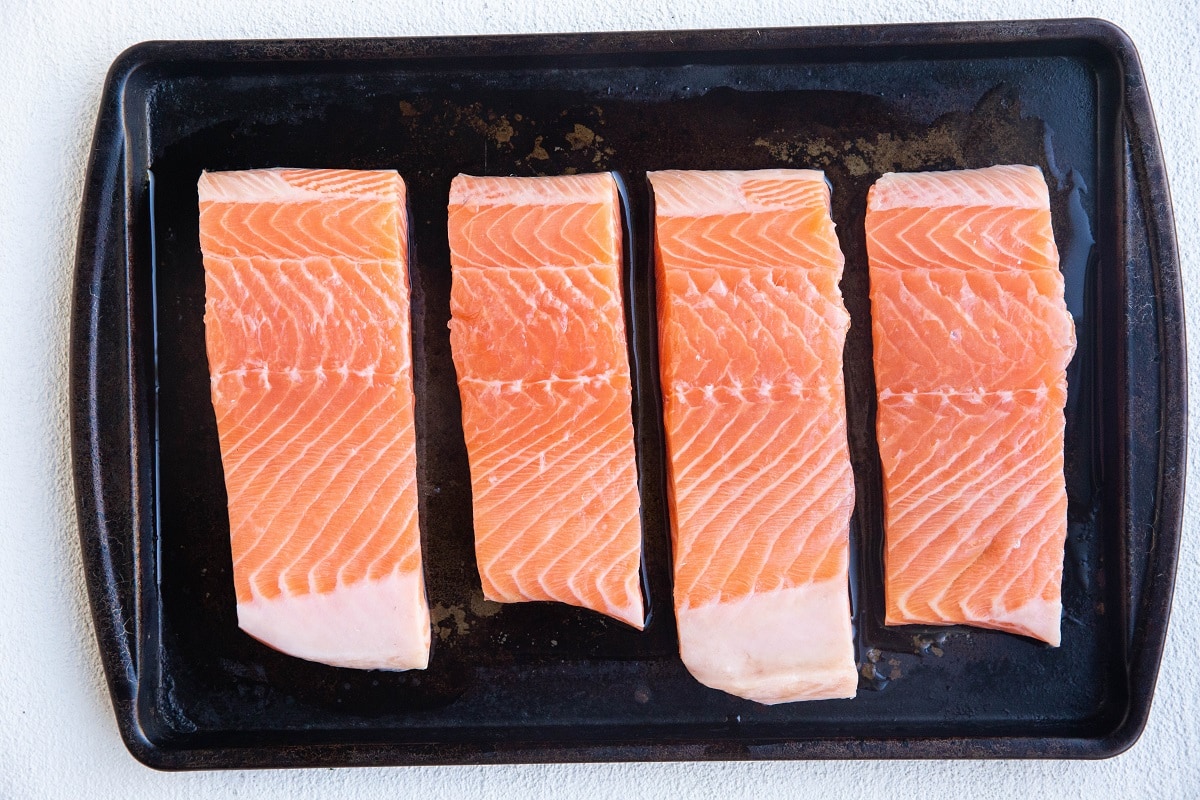
Heat the avocado oil in a large cast iron skillet or a quality nonstick skillet over high heat. If you have a 12-inch skillet you should be able to cook all of the filets at once, but if you have a smaller skillet you may need to cook the salmon in batches.
I don’t recommend using stainless steel for preparing this recipe because you need the skillet to be very hot. Allow the skillet to heat up for a few minutes until it is very hot.
For the best result, the skillet should be about 400 to 450 degrees Fahrenheit before you place the salmon on the skillet.
If you have a laser thermometer, you can check the surface temperature before you start cooking the salmon.
Carefully place the salmon in the hot skillet flesh-side down and sear for 3-5 minutes or until the salmon is nice and golden brown. Be sure to set a timer rather than trying to guess to ensure you don’t over-cook the salmon.

Carefully flip the salmon and cook for another 3-5 minutes on the skin side, or until the salmon has reached your desired level of doneness it doesn’t need to be fully cooked at this point because we will be reheating it in the sauce, but it should be either at or close to your desired level of doneness.

Salmon is considered fully cooked at 145 degrees F. To verify the internal temperature of the salmon, insert a digital thermometer into the thickest part of the fish.
Note that the exact cooking time will vary depending on the thickness of your salmon filets as well as their temperature before hitting the skillet.
Thicker filets and colder filets will require about 4-5 minutes per side, where smaller filets and filets at room temperature will take about 3-4 minutes or even 2-3 minutes per side.
Again, for the best result, be sure to use a meat thermometer so that you have an accurate gauge on the internal temperature.
Transfer the salmon filets to a plate and set aside.
Place the skillet back on the stove top and adjust the heat down to medium heat or just shy of medium-high heat. Add the garlic and sauté for 1-2 minutes, or until it is very fragrant.

Add the canned coconut milk, paprika, onion powder, vinegar, and sun-dried tomatoes to the skillet and stir well.
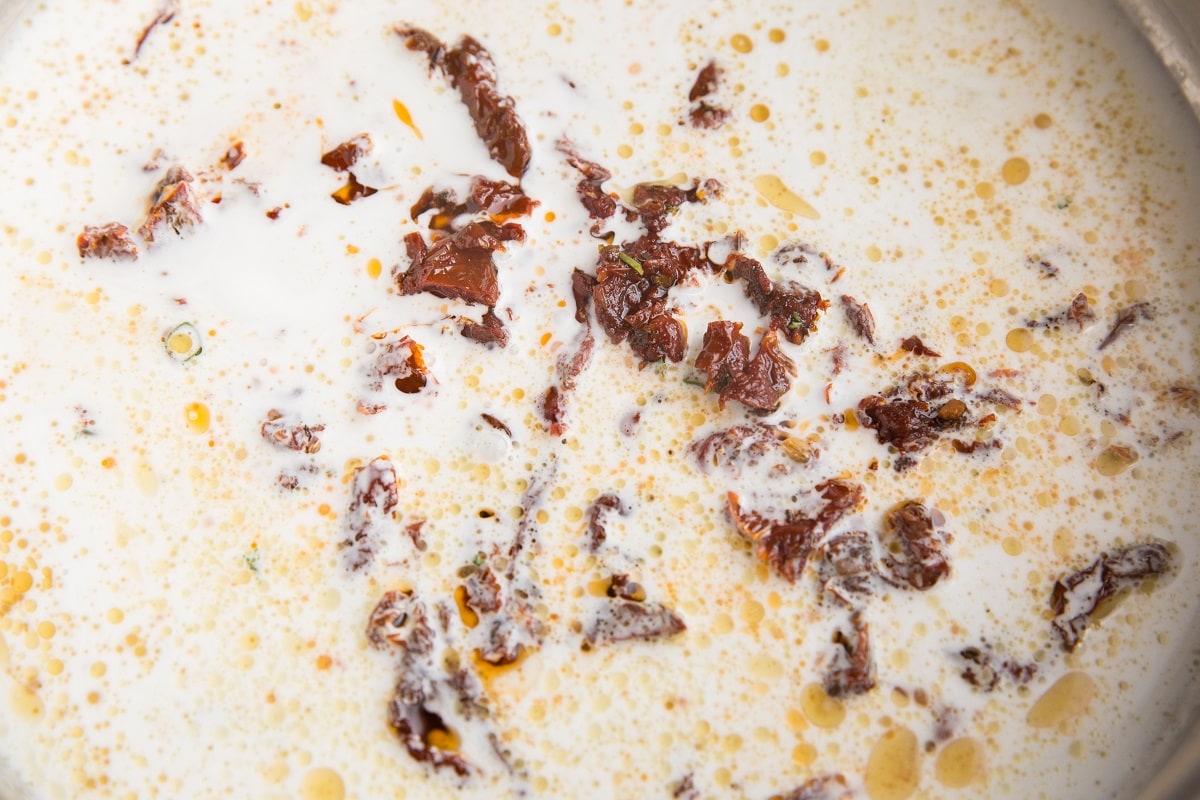
Allow the sauce to cook at a full boil, stirring occasionally, until it has thickened to your desired thickness, about 8 to 12 minutes.
Transfer the seared salmon filets back to the skillet with the sun-dried tomato sauce and use a spoon to ladle the sauce over the salmon. Cook for a few minutes at a gentle simmer, just until the salmon is piping hot.
Garnish the cooked salmon with basil leaves (optional) and chopped green onions.
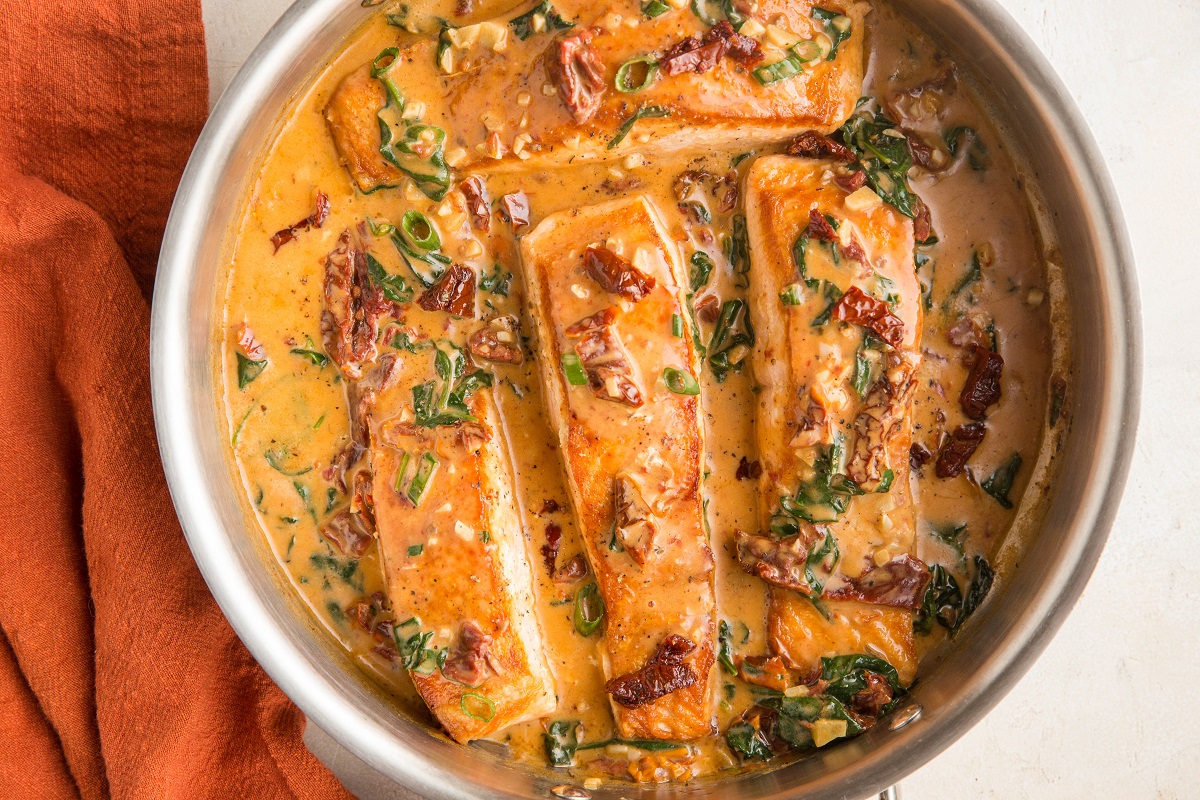
Serve this salmon with sun dried tomato cream sauce with your choice of side dishes, and enjoy!
I recommend serving it with rice, noodles, cauliflower rice, crusty bread, or mashed potatoes to soak up some of the delicious sauce as well as a vegetable side dish like roasted vegetables.
Store leftover salmon in an airtight container in the refrigerator for up to 4 days.
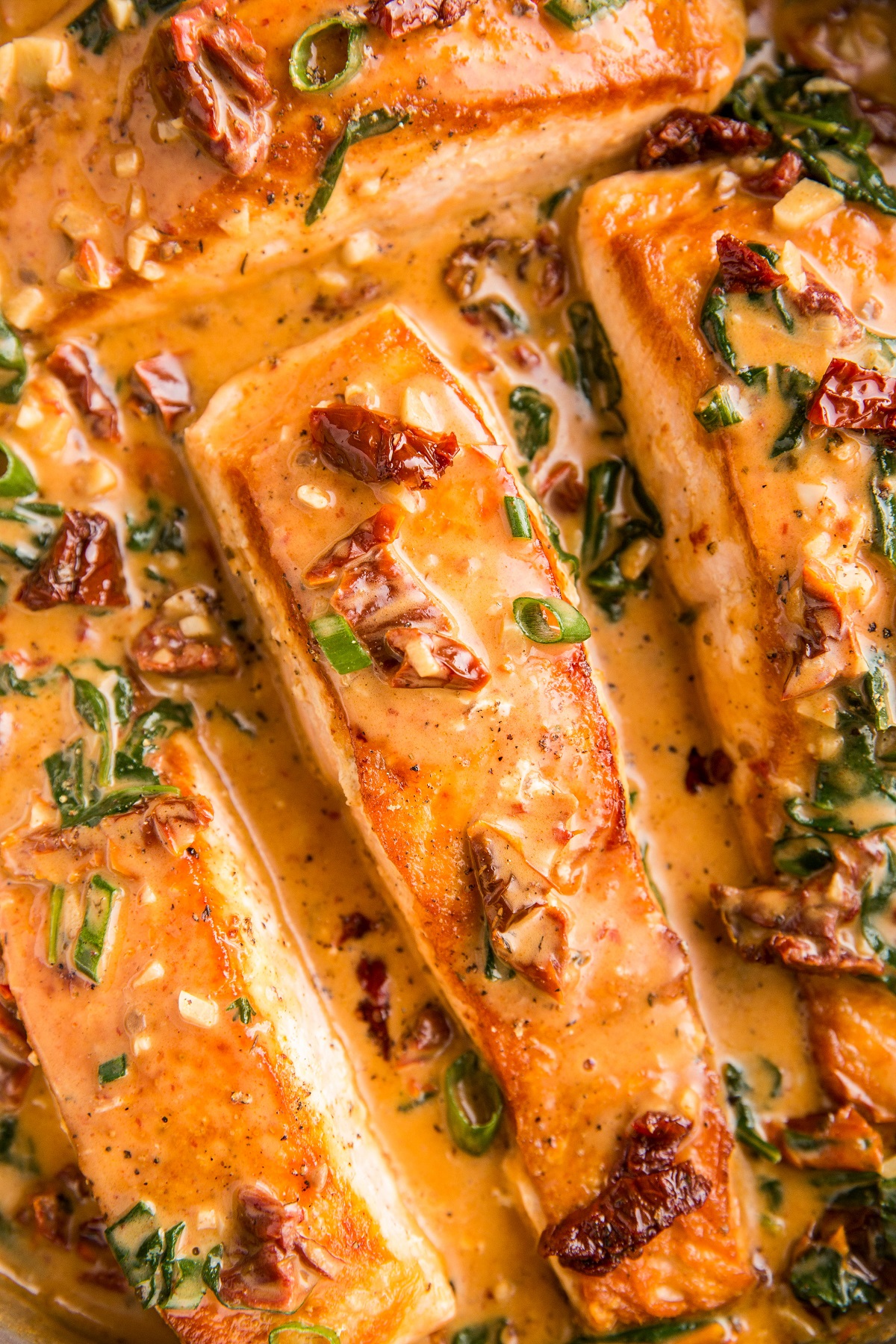
And that’s it! The latest and greatest way to enjoy salmon paired with garlicky sun-dried tomato flavors.
The sun-dried tomato cream sauce is the real MVP in this delicious recipe.
If you’re a sun-dried tomato lover like me, I also recommend my 4-Ingredient Mediterranean Stuffed Salmon or my Sun-Dried Tomato and Feta Baked Salmon with Spinach. Both are true explosions of rustic flavors!
If you love salmon recipes, also try out these reader favorites!
More Healthy Salmon Recipes:
- Crispy Sesame Salmon
- Mediterranean Salmon in Parchment Paper
- My Go-To Crispy Salmon
- Crispy Bang Bang Salmon Bites Bowls
- Crispy Salmon Salad with Cabbage and Peanut Dressing
- Sesame Garlic Air Fryer Salmon Bites
- Crispy Skillet Salmon with Lemon Caper Dill Sauce
- Mushroom and Spinach Stuffed Salmon
Enjoy this flavorful salmon recipe for your next special occasion!

Sun Dried Tomato Salmon Recipe
Ingredients
- 2 Tbsp avocado oil
- 1.5 to 2 lbs salmon cut into individual filets
- Sea salt to taste
- Black pepper to taste
- 5 large cloves garlic minced
- 1 (15-ounce) can full-fat coconut milk *
- ½ tsp paprika
- ½ tsp onion powder
- 1 Tbsp rice vinegar or apple cider vinegar
- 1 (8.5-oz) jar sun-dried tomatoes drained and chopped (about 1 cup of sun-dried tomatoes)
- ½ cup fresh basil leaves optional
- 3 stalks green onion chopped
Instructions
- Remove the salmon from its packaging and pat off any excess moisture using paper towels.
- Sprinkle all of the salmon filets with sea salt and black pepper.
- Heat the avocado oil in a large cast iron skillet or a quality nonstick skillet over high heat. Allow the oil to heat up for a few minutes, until the skillet is sizzling hot (about 400-450 degrees F).
- Carefully place the salmon in the hot skillet flesh-side down and sear for 3-5 minutes or until the salmon is nice and golden brown. Be sure to set a timer rather than trying to guess to ensure you don’t over-cook the salmon.
- Carefully flip the salmon and cook for another 3-5 minutes on the skin side, or until the salmon has reached your desired level of doneness it doesn’t need to be fully cooked at this point because we will be reheating it in the sauce, but it should be either at or close to your desired level of doneness. Salmon is considered fully cooked at 145 degrees F. To verify the internal temperature of the salmon, insert a digital thermometer into the thickest part of the fish.
- Note that the exact cooking time will vary depending on the thickness of your salmon filets as well as their temperature before hitting the skillet. Thicker filets and colder filets will require about 4-5 minutes per side, where smaller filets and filets at room temperature will take about 3-4 minutes or even 2-3 minutes per side. Again, for the best result, be sure to use a meat thermometer so that you have an accurate gauge on the internal temperature.
- Transfer the salmon filets to a plate and set aside.
- Place the skillet back on the stove top and adjust the heat down to medium heat or just shy of medium-high heat. Add the garlic and sauté for 1-2 minutes, or until it is very fragrant. Add the canned coconut milk, paprika, onion powder, vinegar, and sun-dried tomatoes to the skillet and stir well. Allow the sauce to cook at a full boil, stirring occasionally, until it has thickened to your desired thickness, about 8 to 12 minutes. Note: If you're using heavy cream, cook the sauce at a gentle simmer rather than a full boil.
- Transfer the seared salmon filets back to the skillet with the sun-dried tomato sauce and use a spoon to ladle the sauce over the salmon. Cook for a few minutes at a gentle simmer, just until the salmon is piping hot.
- Garnish the cooked salmon with basil leaves (optional) and chopped green onions.
Notes
Nutrition
This post contains affiliate links, which means I make a small commission off items you purchase at no additional cost to you.

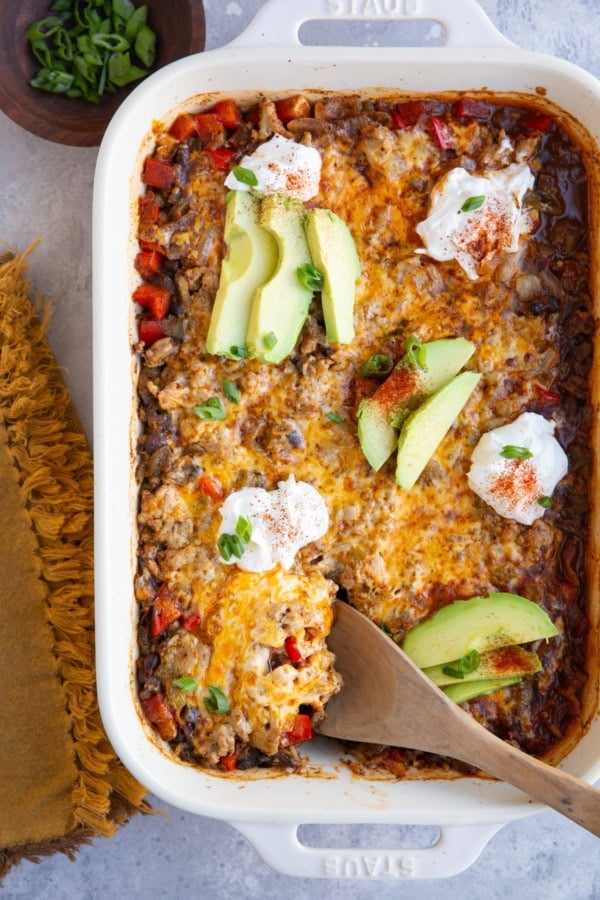

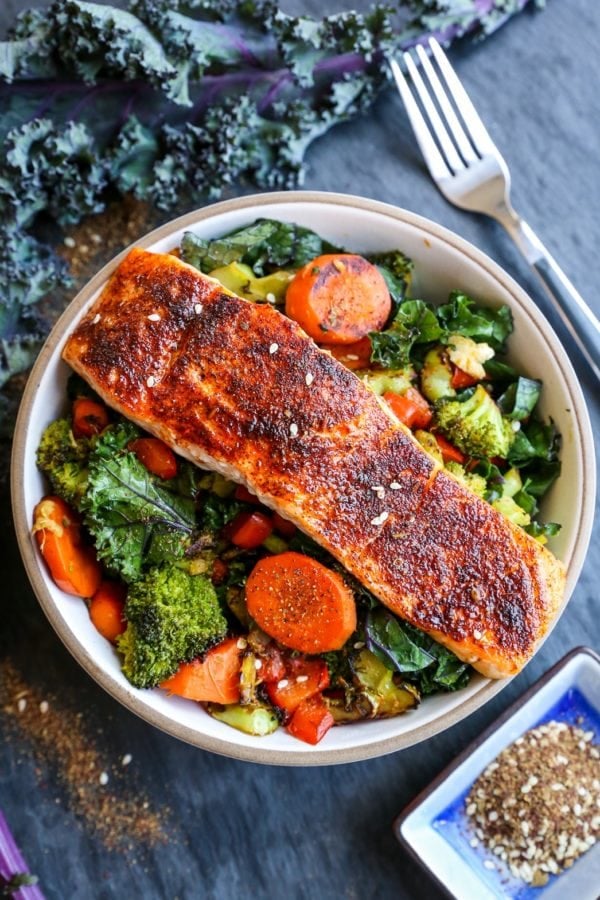
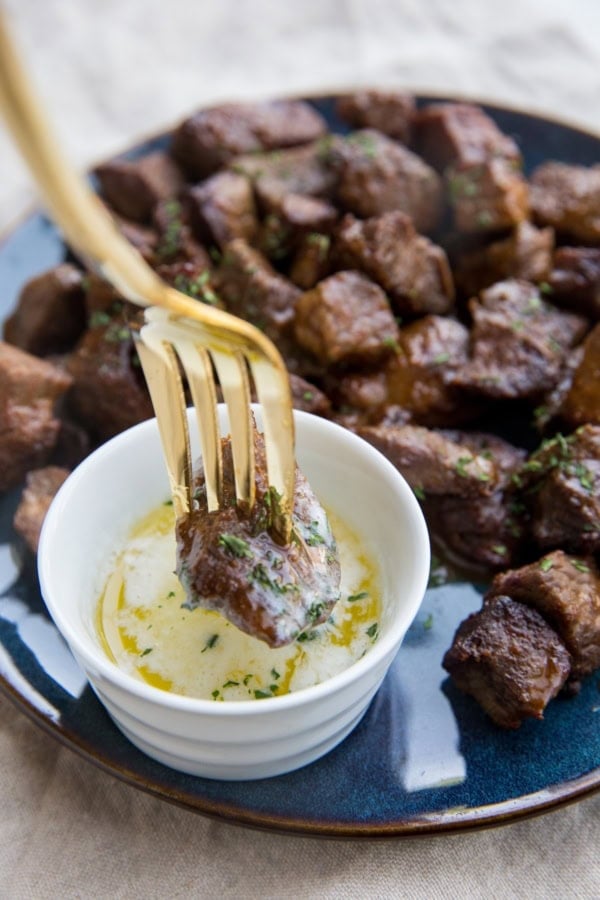











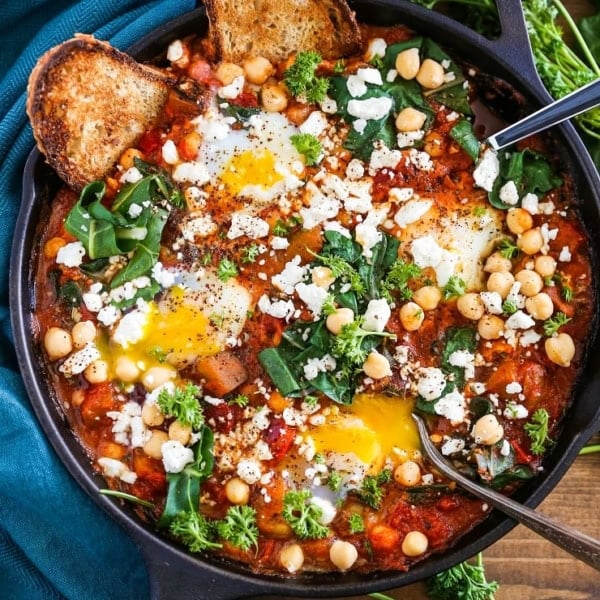


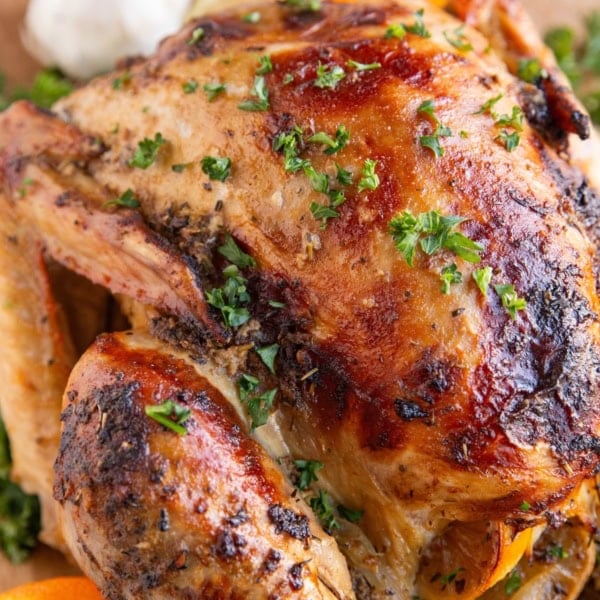
I loved this recipe! Added some modifications – made the coconut milk version and added A LOT more garlic, and added gluten free pasta into the sauce to make it a complete meal. Also thickened the sauce with 3/4 tablespoon of arrowroot to make it more creamy and easy to serve and eat. Also added mushrooms and kale so it felt like a tuscan pasta dish. yum!
Thanks so much for sharing, Krystal! This is super helpful to others who want to try the same changes 🙂
This was excellent!! I baked the salmon filets in a little olive oil instead of pan searing and sautéed white onion with the garlic and deglazed the pan with Sauv Blanc before adding spices, tomatoes, and coconut milk. I also added thinly chopped chard to the sauce. Served with quinoa and roasted delicata squash.👌 The roasted tomatoes in the coconut milk is very tasty! This will be a new staple in our house. Thanks for the recipe!
Ooh, I love the idea of adding sauvignon blanc and serving the salmon with quinoa and delicata squash! All of that sounds so amazing! Thanks so much for sharing, Rachel!
This is delicious‼️
It’s as good as we would spend a lot of money for at a nice restaurant.
I made this dish tonight and it was wonderful! I was lazy and baked the salmon filet whole, but then I poured some of the sauce over it for the last ten minutes, and then served more sauce at the table. It wasn’t as pretty as yours, but still very good. I made it the nondairy version except for the added pesto. Yum. Thank you for your delicious recipes.
All of that sounds so great! Thanks for sharing, Rebecca! xo